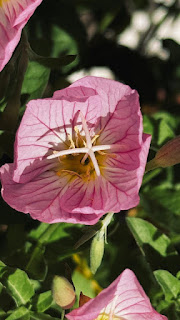Allium stipitatum – Persian Shallot / Ornamental Allium (پہاڑی لہسن / گول پیاز)
– Tall, globe-like violet flowerheads, – Bulbous perennial with architectural impact, – Rare but growable in Lahore with seasonal care
🌿 Botanical Name: Allium stipitatum (AL-ee-um stip-ih-TAY-tum)
🌿 Family: Amaryllidaceae (uh-mah-ril-ID-ay-see-ee)
🧊 Hardiness Zone (USA): 5–9
📏 Height: 2 to 4 feet tall with flower spikes
🍃 Foliage: Strap-shaped, gray-green leaves that emerge in early spring; foliage often begins to wither as flowering begins, leaving the flower on a tall, clean stem
🌸 Flowering Period (Lahore/Punjab):
Late March to early May – round, lavender-violet flowerheads made of dozens of tiny star-shaped florets; long-lasting and showy
🌼 Companion Plants:
-
Salvia nemorosa – upright blue blooms for contrast
-
Nepeta faassenii – low-growing, drought-tolerant foliage beneath
-
Lavandula angustifolia – matches dry-loving needs and adds fragrance

Florets
🏡 Garden Usage: Best in structured beds, rock gardens, containers, and formal borders; often used in groups for dramatic vertical effect; also excellent as dried flowers
🍈 Fruition:
Forms dry, papery seed heads after flowering; seeds can be collected but bulb division is preferred for propagation
🌱 Soil: Light, gritty, well-drained soil enriched with organic compost; raised beds or sandy loam are ideal to prevent bulb rot
⚖️ pH Value: 6.0–7.5 (neutral to slightly alkaline)
💧 Water: Low; water during active growth in spring but stop once flowering ends; excessive moisture in hot months can rot bulbs
🌡️ Temperature: Performs well in Lahore’s winter and spring; goes dormant in hot summers (up to 45°C); plant in autumn (October–November) for best results
☀️ Location Preference (sun or shade): Full sun — 6+ hours of sunlight daily for strong blooms and upright stalks
🌾 Propagation: By bulb division after flowering (in late spring); allow bulbs to dry before replanting in fall
🌻 Fertilizers: Light feeding with bulb fertilizer (low nitrogen) at planting and early spring; avoid over-fertilizing
🦋 Attractiveness to Wildlife: Highly attractive to bees and early pollinators; seed heads may provide structure and interest into late summer
💡 Tip:
Plant in clusters for bold visual impact. Let foliage die back naturally after bloom to feed bulbs. For best results in Lahore, keep bulbs dry in summer or lift and store if soil retains heat.
🌼 May you enjoy discovering, planting, and showcasing this Persian Allium (پہاڑی لہسن / گول پیاز) as a rare architectural gem in your spring garden.
Note: What is a Shallot?
🔤 Pronunciation: SHAL-uht / SHAH-luht (/ˈʃælət/), Urdu: چھوٹا نرم پیاز
Meaning:
A shallot is a bulb-forming plant in the onion family (Allium) known for its mild, sweet flavor. Shallots are often used in cooking as a softer alternative to onions, particularly in gourmet and French cuisine.
In gardening, the word refers to any small-bulbed Allium, including ornamental species like Allium stipitatum, which may resemble the edible Persian shallot but is mostly grown for its large, round violet flowers.
💡 Not all shallots are grown for food—some, like Persian Allium, are prized purely for their blooms!





















































